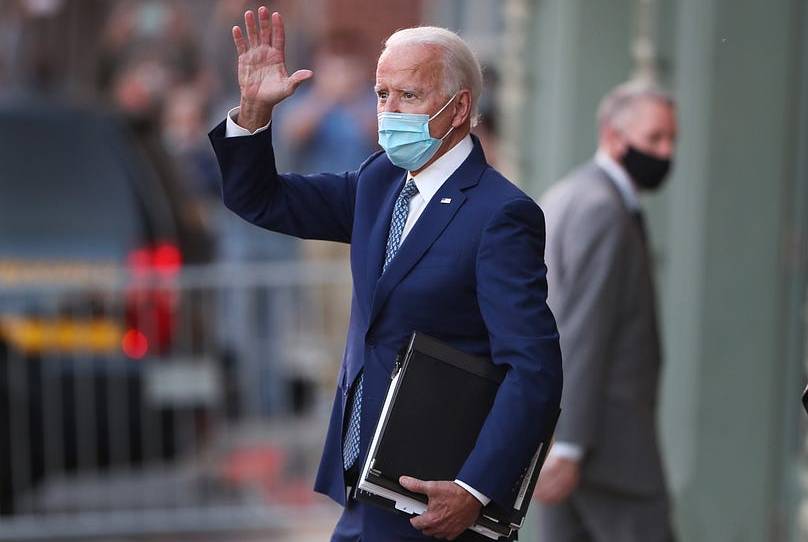Why Biden Outperformed Dems While Trump Fared Worse Than the GOP

The euphoria of Joe Biden’s victory will eventually subside for his supporters, and when it does, they might begin to wonder how a candidate who received more votes for president than any other candidate in history had such short coattails for the rest of the Democratic ticket.
Conversely, when supporters of Donald Trump get over his loss, they might begin to wonder how, even with the president getting substantially more votes than he did in 2016, he seemed to underperform the rest of the Republican Party nationally. The GOP picked up seats in the House, will likely maintain its Senate majority by winning two runoffs in Georgia, and is doing well in races for governor, and exceptionally well in races for statehouses.
One can begin with the Biden team’s core message for much of the campaign, which was broadly, “he’s not Donald Trump.” Biden’s modern version of a “front porch” campaign was obviously successful in keeping the media’s focus on Trump and his problems, but it left Biden less defined policy-wise than most candidates running for the Oval Office. For example, on the handling of the pandemic—the top issue according to exit polls—Biden was seldom clear about what he would actually do as president. He appeared content to let Trump stew in his own COVID juices while he wore a mask to draw a distinction between the two. What was behind the mask was less clear.
For most of the campaign, Biden’s policy positions were often a muddle of the left and the center. At times it was unclear whether he was most interested in consolidating support within the progressive wing of the party or getting traction with fence sitters—including working class voters, moderate Republicans, and independents.
During the final presidential debate, whose importance might actually turn out to have been greater than initially thought, when it came to climate change, the environment and energy, Biden sounded like the speaker at a German Greens seminar. Combating climate change is a “moral obligation,” he said. We need to transition completely away from oil and gas and rejoin the Paris Agreement. As such, Biden seemed to affirm the Trump team’s charge that, as president, he would be a stalking horse for a left wing, business-hostile agenda. Wasn’t he supposed to be after the broad center? Joe Biden never firmly established himself as a policy moderate to the public.
Most crucially, Biden never made the case for an economic agenda that could be sold to the Americans as leading to more growth—the second most important issue according to exit polls. Although Trump’s mishandling of the pandemic was seen by the public as a test of his capacity to lead in a time of crisis—and convinced many he was not deserving of a second term—the pandemic itself was now a fact of life. What voters wanted to know was whether Biden, when in office, could show he had a plan for getting the country back on track economically as he dealt with the virus. The public wanted some assurance for predictable jobs and growth expansion. It might be an overstatement this time around to say, “it’s the economy, stupid.” But it would have been reasonable to have asked, “what about the economy, stupid?” It’s a question voters were not convinced Biden had an answer for—or, at least, an answer that was better than what Republicans might offer up.
What this also suggests is that, when it came to a specific set of voters, they could reasonably vote for Biden with the hope he would occupy the office in a way they considered appropriate—that is, presidential. They were tired of Trump’s antics, his dubious use of executive power, and the divisive politics of the bully pulpit. These swing voters could turn to Biden, knowing he had a track record of sorts as vice president that suggested a return to normalcy. But that didn’t preclude a vote for Republicans running for the Senate and the House whose policy leanings were more aligned with the center and center-right. If the Senate remained Republican, it would be a check on a potentially problematic Biden administration domestic policy agenda. “COVID, COVID, COVID” was indeed hammered home as Trump’s Achilles’ Heel, a deadly weakness exposing his inability to be the kind of leader the public expected. Nevertheless, the public also wanted to know with more certainty what would come next if and when Trump was gone—a test Biden failed.
It will take more analysis and number crunching to more completely understand how the election took the turn it did. But with the Election Night hangover receding, clearer heads might conclude that the American public produced a relatively reasonable outcome: putting someone more likely to be presidential into the Oval Office, while keeping the Senate’s institutional check in place. This electoral “success” does not of course mean that the underlying problems in American politics will wither away. Polarization will remain a constant for some time, fed by significant differences of opinion on where the country should be headed and by deficiencies in the functionality of our key institutions. However, with the election’s results, an opening to a marginally more civil future is possible. If Biden follows through on his pledge to work across the aisles, and if Senate and House leaders spend less time using the legislative process as a platform for electioneering and more time reaching agreements on things, anything is possible. Big “if’s” remain, for sure. But, given the past four years, even baby steps are to be welcomed if this initial electoral success is to offer lasting impact.
Photograph by Joe Raedle/Getty Images.